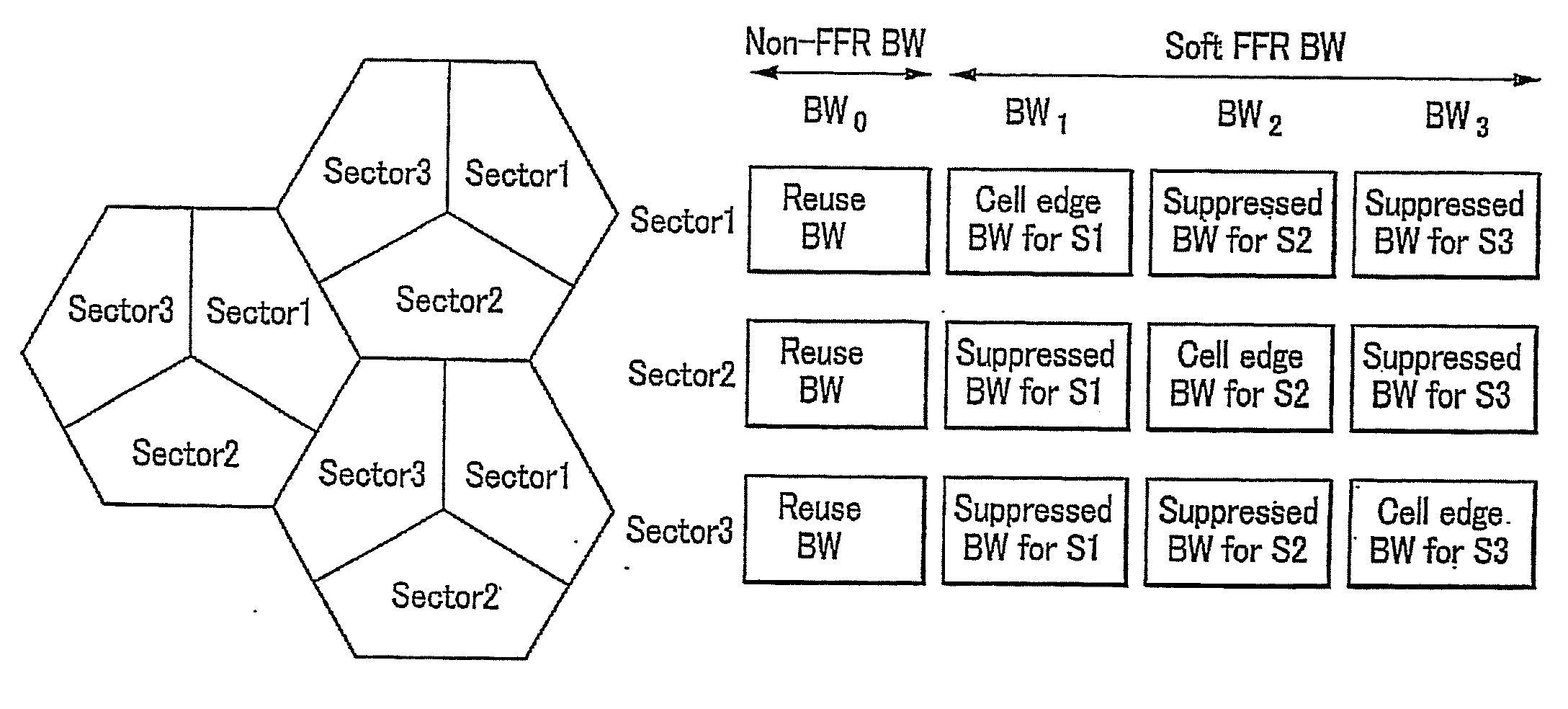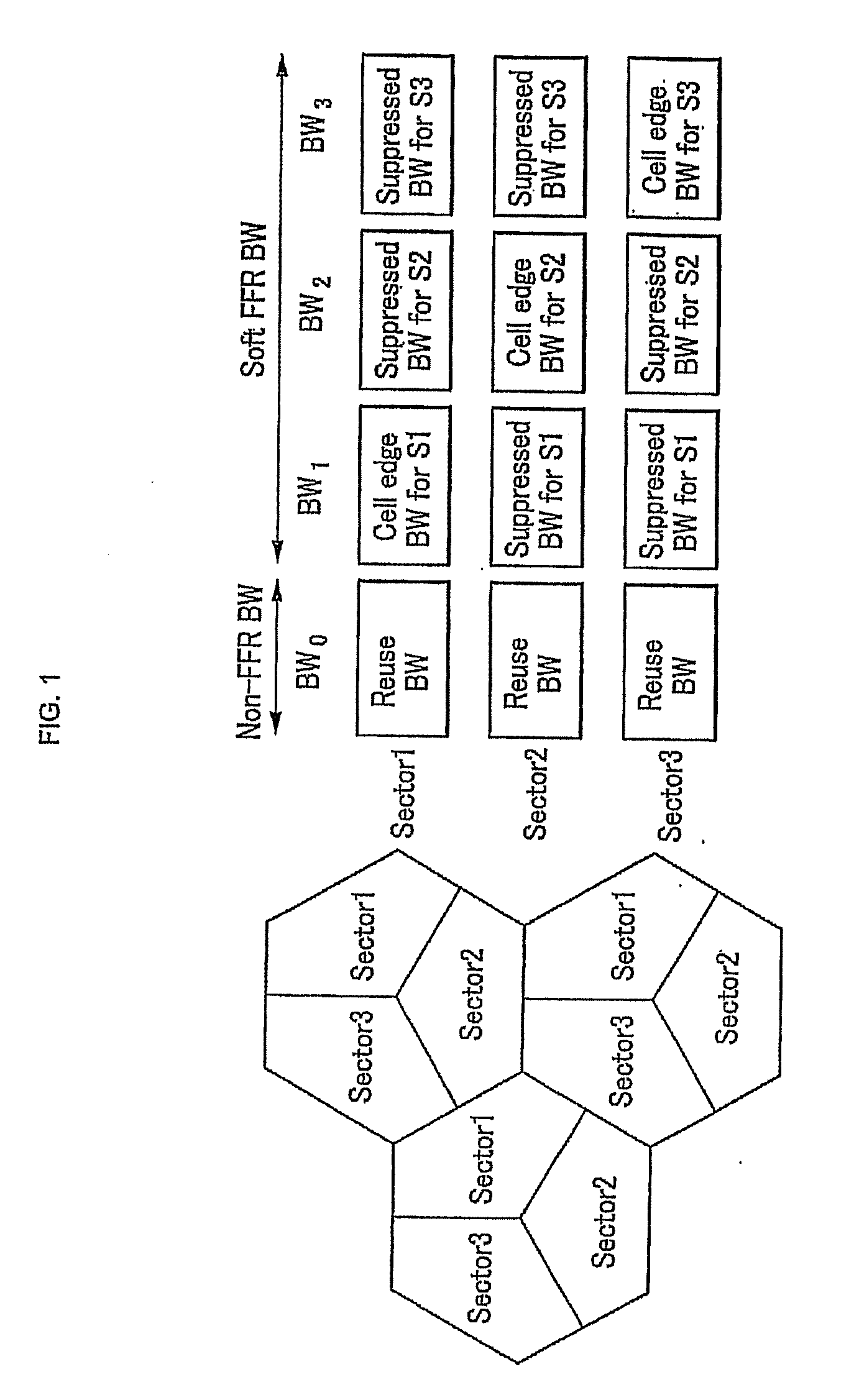Method of performing uplink scheduling
- Summary
- Abstract
- Description
- Claims
- Application Information
AI Technical Summary
Benefits of technology
Problems solved by technology
Method used
Image
Examples
Embodiment Construction
Technical Problem
[0012]The present invention has been made in an effort to provide a method of performing uplink scheduling, which controls transmission power of a mobile station, in a base station, so as to reduce interference influence of an adjacent cell.
Technical Solution
[0013]An exemplary embodiment of the present invention provides a method of performing uplink scheduling of a mobile station in a base station, the mobile station being located in a service cell of the base station. In the method, at least one adjacent cell influenced by power of the mobile station exists, and the uplink includes a plurality of frequency bands that are different from one another. The method of performing the uplink scheduling includes: receiving interference amounts of the plurality of frequency bands corresponding to the at least one adjacent cell, respectively; calculating a plurality of interference values each corresponding to the plurality of frequency bands by using the plurality of interf...
PUM
 Login to View More
Login to View More Abstract
Description
Claims
Application Information
 Login to View More
Login to View More - R&D
- Intellectual Property
- Life Sciences
- Materials
- Tech Scout
- Unparalleled Data Quality
- Higher Quality Content
- 60% Fewer Hallucinations
Browse by: Latest US Patents, China's latest patents, Technical Efficacy Thesaurus, Application Domain, Technology Topic, Popular Technical Reports.
© 2025 PatSnap. All rights reserved.Legal|Privacy policy|Modern Slavery Act Transparency Statement|Sitemap|About US| Contact US: help@patsnap.com



